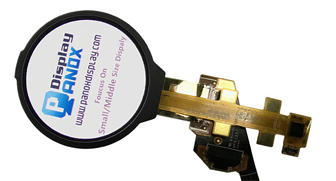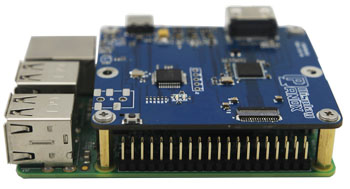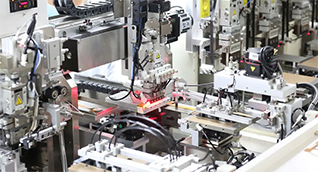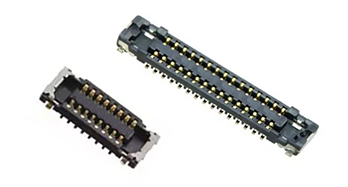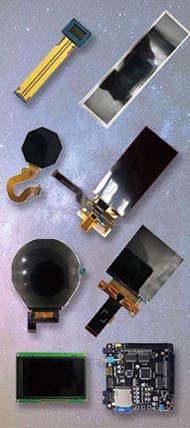TFT LCD and AMOLED differ significantly in how they produce light, impacting image quality, power use, and cost. TFT LCD uses a backlight to illuminate pixels, while AMOLED pixels emit their own light, resulting in superior contrast and energy savings for dark content. Also check: Micro OLED
What Are the Fundamental Differences Between TFT LCD and AMOLED Displays?
TFT LCD relies on a constant backlight behind the screen to show images, with liquid crystals controlling pixel light passage. AMOLED is self-emissive; each organic pixel produces its own light. This difference results in AMOLED having deeper blacks and thinner displays, while TFT LCD screens tend to be thicker and use more power for full white screens.
AMOLED’s self-lighting offers vibrant colors and the ability to turn pixels off completely, while TFT LCD’s backlight leads to lower contrast and some light bleed in dark scenes.
How Do TFT LCD and AMOLED Compare in Color Reproduction and Image Quality?
AMOLED screens provide rich, saturated colors that appeal to users looking for vivid visuals on smartphones and TVs. In contrast, TFT LCDs often render colors more naturally and accurately, making them ideal for graphic design and industrial applications.
AMOLED produces true blacks by switching off pixels individually, resulting in high contrast ratios, whereas TFT LCD blacks appear grayish due to the backlight.
Which Display Technology Is More Energy Efficient and Why?
AMOLED generally consumes less power when displaying darker images, as black pixels are turned off and use no energy. However, it can use more power than TFT LCD for predominantly white or bright screens because each pixel generates its own light.
TFT LCD’s backlight remains on constantly, so power consumption is more uniform regardless of image content, often leading to higher overall energy use compared to AMOLED for dark content.
What Are the Differences in Thickness, Flexibility, and Design Potential?
AMOLED displays are thinner and lighter since they require no backlight, and they can be built on flexible plastic substrates. This flexibility supports the development of curved or foldable devices, allowing innovative designs on mobile devices.
TFT LCDs require an additional backlight layer, making them thicker and heavier. Their structure generally lacks flexibility, limiting their use in foldable technology.
How Do TFT LCD and AMOLED Differ in Viewing Angles and Response Times?
AMOLED screens offer nearly perfect viewing angles with minimal color shift and faster pixel response times, making them excellent for gaming and video playback. TFT LCDs can experience color shifts at extreme angles but have improved with IPS technology.
TFT LCD response times are slower, which can lead to motion blur in fast-moving images compared to AMOLED’s sharp motion rendering.
Why Is Burn-In a Concern for AMOLED but Not for TFT LCD?
AMOLED uses organic materials that degrade over time, leading to shorter screen lifespan and susceptibility to burn-in, where static images cause permanent ghosting. TFT LCDs use inorganic materials and backlighting, resulting in longer durability and no burn-in risk.
This difference makes TFT LCD a preferred choice for devices that display static images for extended periods, such as medical or industrial monitors.
When Is AMOLED More Suitable Than TFT LCD?
AMOLED is best for premium devices prioritizing image quality, power efficiency with dark UI themes, and sleek, flexible designs. It suits smartphones, smartwatches, and high-end TVs where vibrant colors and contrast are essential.
Panox Display leverages AMOLED technology to provide display solutions for wearable and mobile industries, emphasizing energy efficiency and visual excellence.
When Should You Choose TFT LCD Over AMOLED?
Choose TFT LCD for budget-friendly devices, long-lasting operation, and steady performance under continuous static display conditions. Its superior outdoor visibility and color accuracy make it ideal for industrial equipment, medical devices, and applications with high sunlight exposure.
Panox Display offers a wide range of TFT LCDs optimized for outdoor readability and robustness in demanding environments.
How Can Product Developers Decide Between TFT LCD and AMOLED for Their Applications?
Developers should weigh factors like cost, power consumption, display lifespan, usage environment, and design flexibility. AMOLED suits innovative, design-focused products with visual appeal, while TFT LCD fits cost-effective, reliability-focused, and high-brightness needs.
Panox Display supports developers by providing detailed specs and customizable options of both technologies to match diverse project requirements.
Comparison Table: Key TFT LCD vs AMOLED Features
| Feature | AMOLED | TFT LCD |
|---|---|---|
| Light Source | Self-emissive pixels | Backlit |
| Contrast & Blacks | True black via pixel-off | Grayish blacks due to backlight |
| Color Reproduction | Vivid, saturated | Accurate, natural |
| Power Consumption | Efficient for dark content | Constant power use |
| Thickness & Flexibility | Thin, flexible, supports curved screens | Thick, rigid |
| Response Time | Fast, less motion blur | Slower response |
| Viewing Angle | Wide, minimal color shift | Improved with IPS, some shift |
| Lifespan & Burn-in | Shorter, risk of burn-in | Longer, burn-in resistant |
| Cost | Higher manufacturing complexity | Lower cost |
| Outdoor Visibility | Weaker in sunlight | Good visibility, transflective options |
Panox Display Expert Views
"At Panox Display, our focus is blending cutting-edge AMOLED and reliable TFT LCD technologies to meet diverse market demands. AMOLED's vibrant visuals and design flexibility drive innovation in wearables and foldable devices. Meanwhile, our TFT LCD solutions ensure robust performance and cost-efficiency for industrial and outdoor applications, making us a leader in tailor-made display solutions." — Panox Display R&D Team
What Are the Best Practices for Maintaining TFT LCD and AMOLED Displays?
For AMOLED, avoid prolonged static images and reduce maximum brightness to minimize burn-in risks. Use dark themes and screen savers. For TFT LCD, regular cleaning and avoiding extreme shocks help maintain longevity. Both benefit from proper temperature conditions and gentle handling.
How Does Cost Influence the Choice Between TFT LCD and AMOLED?
AMOLED displays generally cost more due to complex manufacturing and organic material use, impacting product pricing. TFT LCDs remain cost-effective with simpler production and longer life, ideal for budget-sensitive applications.
Are There Emerging Innovations Enhancing TFT LCD or AMOLED Technologies?
OLED material improvements are advancing AMOLED lifespan and reducing burn-in. Meanwhile, TFT LCD technology benefits from enhanced backlighting techniques, like mini-LED, boosting brightness and contrast. Panox Display continuously monitors and integrates these advancements into their offerings.
Conclusion
Choosing between TFT LCD and AMOLED hinges on your priorities: AMOLED excels in vibrant color, true blacks, and design flexibility but costs more and risks burn-in. TFT LCD provides cost efficiency, durability, and excellent outdoor visibility. Panox Display’s expertise ensures quality choices for diverse needs, whether cutting-edge AMOLED solutions for mobile devices or reliable TFT LCD panels for industrial applications.
FAQs
Q1: Can AMOLED displays be used for outdoor devices?
AMOLED can struggle in bright sunlight due to lower peak brightness but is improving with new materials.
Q2: Why do AMOLED screens consume less power with dark content?
Because black pixels are turned off and don’t emit light, saving energy.
Q3: Is TFT LCD better for long-term static image use?
Yes, TFT LCDs don’t suffer from burn-in, making them more durable for static content.
Q4: Can TFT LCDs be flexible like AMOLED?
No, TFT LCDs generally aren’t flexible due to backlight and thicker construction.
Q5: Does Panox Display offer custom display solutions?
Yes, Panox Display supports OEM, custom LCD, and OLED projects with both AMOLED and TFT LCD technologies.











